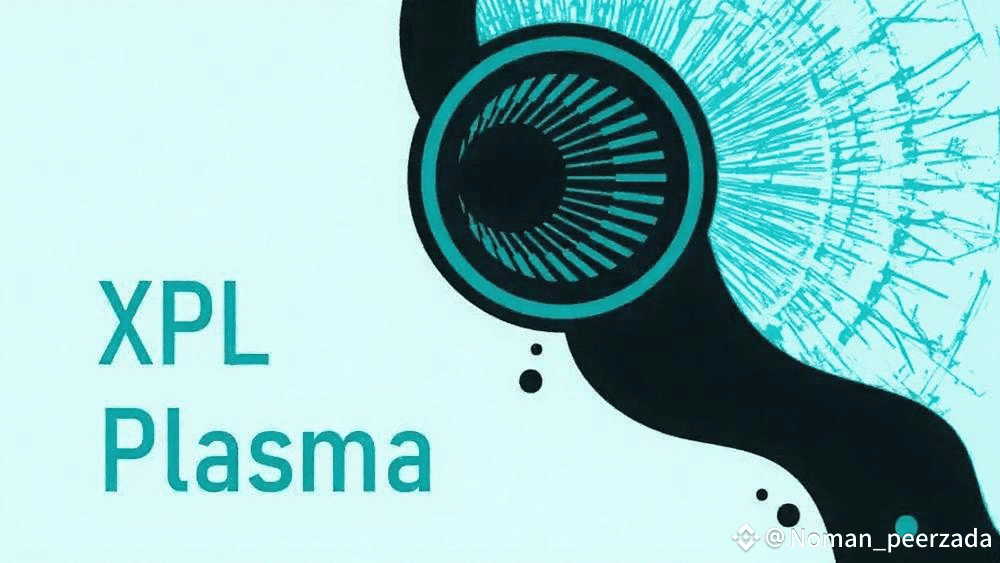Plasma hits teh market when stablecoins have gone from a specialty tool to a key part of how digital money moves around The design shows we get that the main struggle with stablecoins isn't making them, btu keeping them moving Plasma's design, a high-speed Layer 1 system with stablecoin transactions at its heart, tackles this issue by cutting down the expense and delay in moving things around, particularly for assets like USDT that keep the world's money flowing smoothly in all sorts of situations
The network's early growth in stablecoin reserves shows a pattern you don't often see in new chains: it's more about people building up their balance than just betting on price swings It looks like ecosystems are starting to judge crypto networks more by how well they handle transactions than by how many different features they have, especially since one network with stablecoins got really big super fast Plasma's focus on super-fast settlements adn consistent transfer fees puts it at the forefront of this new trend in "settlement competitiveness." The network that handles the most transactions smoothly and reliably will be the one that stays relevant for the long haul
Under the surface, Plasma’s technical structure sets a different expectation for what a general-purpose L1 can look like when it is optimized for a single economic primitive. Teh consensus layer, based on a HotStuff-style BFT method, is designed to be cautious: it has a set schedule for validator changes and fast confirmations to minimize the risk when moving money The execution layer still works with the usual tools, but the network clearly separates doing calculations from handling transactions The system can handle everyday apps, but it's really geared towards quick, simple, and high-volume transactions that are more like old-school payments, not the complicated stuff you see in DeFi
The outcome is a model that merges crypto-native infrastructure with features typically found in traditional financial systems No charge for certain stablecoin transfers, you can pay fees however you like, and we're really strict about how fast things need to happen This blended identity sparks some cool questions for web3: what's the deal when a blockchain starts acting more like a dedicated pathway for everyday cash moves rather than a playground for endless computing
Plasma's roadmap adds another layer to this transition The whole thing, from kicking off publicly to the quick cash flow and how often they release their main coin, shows the push-pull between going with what the market wants and sticking to a solid long-term game plan When teh market gets shaky, those token unlocks really get people's attention because they're testing how tough the network is, not just when things are looking good Keep an eye on how stablecoins are flowing, not just the price.That's the real deal to see if this network is becoming the backbone it's supposed to be
Plasma's trying to set itself up as a blockchain network that hooks up with other payment systems and keeps things in check Rather than framing growth solely through decentralized applications, it is embedding itself into environments where liquidity, regulation, and consumer-grade reliability intersect. This represents a broader trend within Web3 where chains evolve from purely open platforms into hybrid layers that accommodate both permissionless innovation and structured financial oversight.
When it comes to technical analysis, the way the market's been acting with XPL shows just how tricky it is to balance token economics wih how much infrastructure gets used Indicators point toward short-term downsides driven by circulating supply expansion and broader market softness. Yet these movements coexist with rising liquidity on the network, creating a divergence between token volatility and settlement utility. This pattern shows a common thread in network infrastructure: the value doesn't spread out evenly among users, and the tech can still get stronger even if the token's price drops
The long- Is the key to Plasma's success whether its targeted approach can grow into a global layer for digital currency Stablecoins remain one of the clearest bridges between traditional finance and the crypto ecosystem, and any chain that aims to serve them must balance speed, security, regulatory clarity, and economic sustainability. Plasma's early moves show it wants to take over this space, but proving that focusing on one thing is better than being a jack-of-all-trades will be key in a world where competition is tougher than ever
In a world where blockchains try to do it all, Plasma tells a different story: it's a chain focused on just one economic purpose The way Web3's setup handles money flow, how easy it is to trade, its design choices, and its compliance methods show us a snapshot of what its future might look like as it gets more connected with the world's financial systems As we move forward, it'll be interesting to see if this specialization turns out to be our ace in the hole or if it ends up holding us back in a market that values both speed and flexibility




